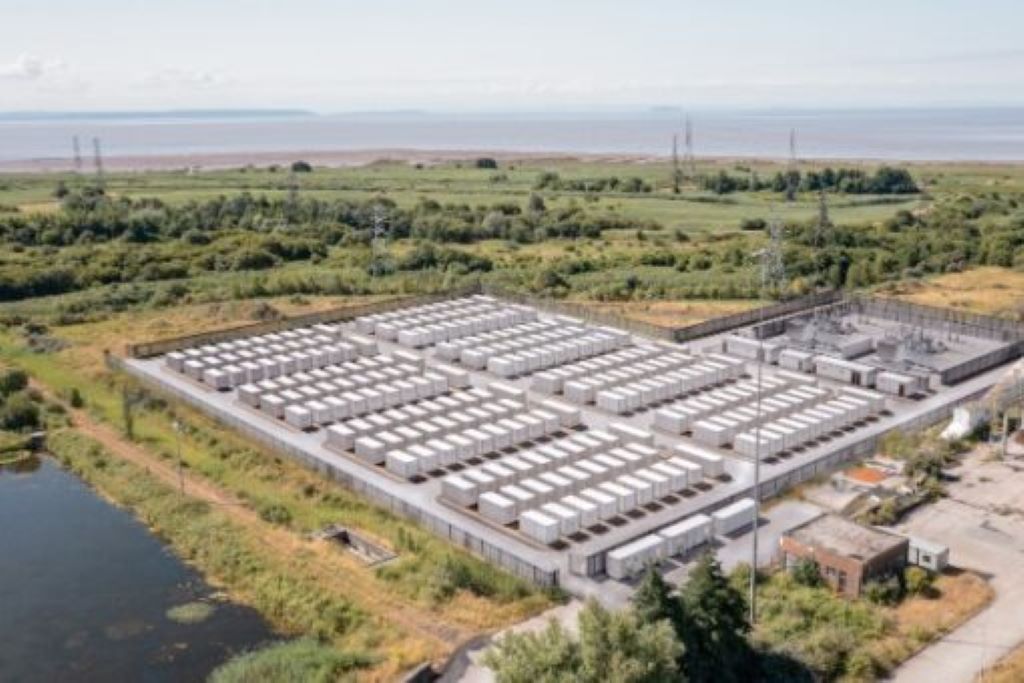Government charges Clean Power 2030 ambition
The Department for Energy Security and Net Zero has outlined the route to 100% clean electricity generation by the end of the decade – the North stands ready to benefit from the strategy.
Put forward by energy secretary Ed Miliband, the Clean Power 2030 report states that “British households will be better protected from [the] rollercoaster of fossil fuel markets” and could unlock up to £40bn of annual investment into homegrown clean energy projects.
Read the Clear Power 2030 Action Plan
Pathways for the desired changes have been defined by the independent National Energy System Operator, which states that “to achieve clean power by 2030, a once-in-a-generation shift in approach and in the pace of delivery is required”.
Suggestions include increasing offshore wind capacity, addressing problems with the National Grid, turning towards clean dispatchable technologies, and addressing slow planning processes.
However, the NESO has stated that the government’s desires are achievable and would provide energy security and lower costs for people and businesses.
The report indicates that the North West and North Wales are regions that would specifically benefit from new jobs created as a result of the strategy and its focus on hydrogen production and carbon capture. Net Zero Teesside – a scale gas plant and carbon capture site described the strategy as a “landmark step forward”.
On the same day as the report’s launch, Siemens Gamesa’s offshore wind turbine blade factory opened in Hull. Darren Davidson, head of Siemens Gamesa, said: “Siemens Gamesa has installed over 10 GW of offshore wind in the UK, which is nearly 70% of the UK’s installed wind operational capacity.
“To date, we have manufactured over 2,300 offshore wind turbine blades at our factory in Hull. We have over 1,300 employees in Hull, after recruiting more than 600 people in the last 12 months.”
What must be done differently?
The NESO has set out what it believes to be the major changes required to bring about swift and effective change to the UK’s clean energy provision.
Increase offshore-wind capacity
To generate sufficient levels of wind power for the National Grid, the UK will need to contract as much offshore wind capacity in the coming one to two years as in the last six combined.
The NESO report identifies offshore wind as the “bedrock of the clean power system”, providing more than half of the UK’s energy generation, with wind and solar power providing another 29%.
The North West currently has an offshore wind capacity of 5.5 GW across four generators, while the East Coast (north of Humber) has nine generators with 13.3 GW capacity.
Offshore wind is a growing industry in the North which includes Doggerbank wind farm, Burbo Bank in Liverpool City Region, Walney in Cumbria, and Teesside.
Recently, Ørsted announced up to £100m worth of contracts for its £8.5bn Hornsea 3 offshore wind farm off the coast of East Yorkshire – the scheme would have the capacity to power well above two million homes.
Address the dysfunctional National Grid
The report states that over the previous five years, the grid connection queue has grown tenfold, and now contains an equivalent capacity of 739 GW.
Many schemes are stuck in a queue, as planning permissions are dealt out on a first-come, first-served basis. Action will be taken to rationalise the queue and prioritise critical clean energy projects.
Simultaneously, stalled and slow-moving projects could be left behind, which the government hopes could also help purge planning systems of unviable projects.
Through a reassessment of the National Grid, schemes will be able to efficiently connect to the grid and begin to unlock their full economic potential.
In addition, a major network expansion will be required, improving transmission and distribution. Important projects are to be accelerated and the report states “failure in a single area – generation, flexibility, networks – will lead to failure overall; all parts need to deliver to achieve clean power.”
Deliver first-of-a-kind clean dispatchable technologies
Carbon capture and storage, as well as hydrogen to power facilities, are key to the Clean Power 2030 strategy.
Plans for the North West’s HyNet are due to go in next spring to the planning inspectorate, a project which recently received more than £20m of government funding, and the East Coast Cluster are two such carbon capture facilities.
The government states that funding, signalling, and policy to develop such projects will allow for greater private investment in the sector.
Construction on Teesside’s East Coast Cluster is due to commence midway through 2025 and will create thousands of jobs.
Addressing lethargic planning
A Planning and Infrastructure Bill is expected to be brought forward that would streamline the delivery of critical infrastructure in the planning process.
Clarity will be provided on what the UK’s energy mix will look like in 2030 on a national and regional level, and the National Policy Statements for energy that guide planners will be updated to provide clear direction on amounts of clean power and energy infrastructure needed.
Onshore wind will be brought back into the Nationally Significant Infrastructure Project regime in England, which will make onshore wind farms larger than 100MW more likely to come to fruition.
Big, bold change
Secretary Miliband commented: “A new era of clean electricity for our country offers a positive vision of Britain’s future with energy security, lower bills, good jobs, and climate action.
“This can only happen with big, bold change and that is why the government is embarking on the most ambitious reforms to our energy system in generations.
“The era of clean electricity is about harnessing the power of Britain’s natural resources so we can protect working people from the ravages of global energy markets.”
He continued: “The clean power sprint is the national security, economic security, and social justice fight of our time – and this plan gives us the tools we need to win this fight for the British people.”





